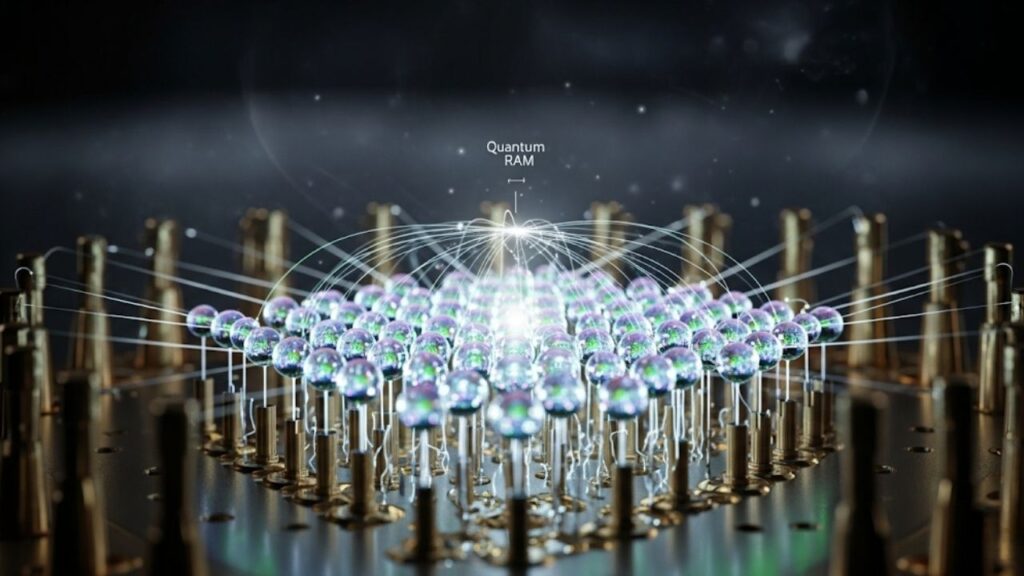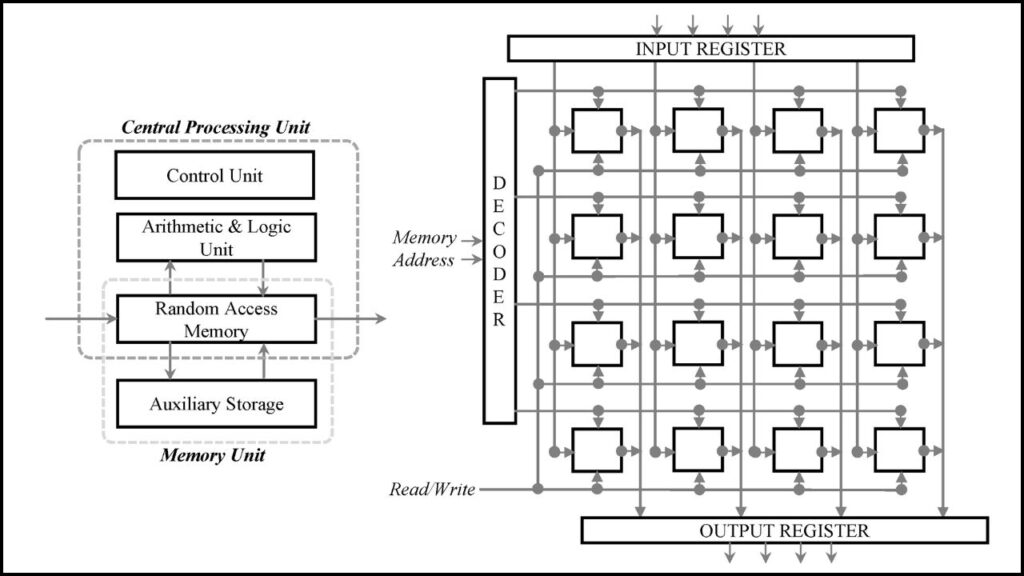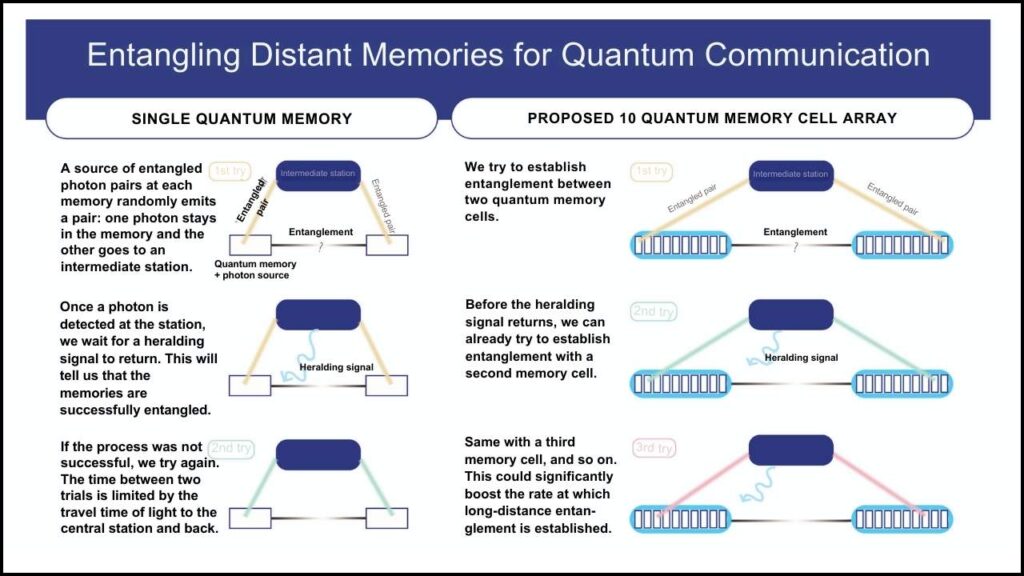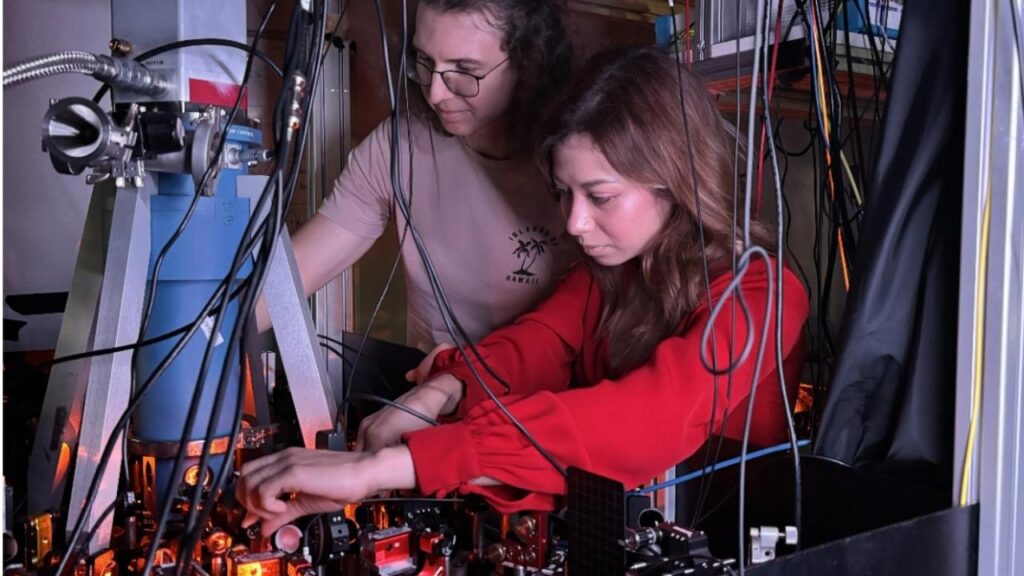The recent breakthrough in quantum memory arrays represents a landmark advancement in quantum technology, inching us closer to realizing true Quantum Random Access Memory (QRAM). This exciting development from a team of researchers at ICFO demonstrates a scalable, integrated solid-state quantum memory array capable of storing and retrieving quantum bits (qubits) on demand. Quantum RAM is poised to revolutionize quantum computing and communications by enabling vastly more powerful and efficient data storage and processing — a crucial step towards practical quantum computers and the future quantum internet.

This article explores this breakthrough in accessible terms for beginners while providing valuable insights for professionals in the field. It will break down what quantum memory arrays and QRAM are, why this step is significant, and how this advancement might transform computing and global communication networks.
Table of Contents
Quantum Memory Array
| Key Topic | Details |
|---|---|
| Quantum Memory Array | Integrated array of 10 individually-addressable solid-state quantum memory cells. |
| Qubit Storage | Supports time-bin and path encoding for photonic qubits with on-demand retrieval. |
| Advancement | World record 250 storage slots in a single crystal cooled to 3 Kelvin. |
| Applications | Quantum computing, quantum repeaters, scalable quantum networks, light-based quantum tech. |
| Research Team and Institute | Led by Prof. Hugues de Riedmatten, ICFO, Spain. |
| Official Publications | Detailed results published in Physical Review X and npj Quantum Information. |
| Scalability Challenge | Next steps include increasing memory cells, storage time, and efficiency. |
| Links for Verification & Detail | ICFO Official Website, Physical Review X |
The development of a quantum memory array with ten independently controllable solid-state memory cells represents a significant stride towards realizing true Quantum Random Access Memory (QRAM). This technology allows qubits to be stored and retrieved on demand with high fidelity and multiplexing capabilities, essential for unlocking the full potential of quantum computing and secure quantum communication networks.
By overcoming key bottlenecks—such as inefficient entanglement generation waiting times and scalability challenges—this breakthrough directly paves the way for more practical quantum networks and computing architectures. As research continues to enhance memory capacity, duration, and integration, QRAM is becoming not just a theoretical goal but an achievable technology shaping the future of information technology.
Understanding Quantum Memory Arrays and Quantum RAM
What is Quantum RAM?

Just like your computer uses RAM (Random Access Memory) to temporarily hold and quickly access data, Quantum RAM (QRAM) is the quantum version of this memory system. It stores quantum bits or qubits, which unlike classical bits (0s or 1s), can exist in multiple states simultaneously thanks to a phenomenon called quantum superposition. Traditional RAM uses electrical signals to store and retrieve data, but QRAM uses quantum particles like photons or electrons.
QRAM allows the quantum computer to access and process many pieces of data at once by querying multiple memory locations in quantum superposition, providing exponential speedups in certain quantum algorithms and communication tasks.
What is a Quantum Memory Array?
A quantum memory array is a structured collection of quantum memory cells that can each store qubits and be individually controlled and accessed. The breakthrough ICFO team announced involves an array of ten individually controllable quantum memory cells embedded in a single crystal cooled near absolute zero (3 Kelvin).
This array can store photons—particles of light—as qubits either through:
- Path encoding: where the qubit is defined by the particular memory cell (path) the photon enters.
- Time-bin encoding: where qubits are encoded in the photon’s arrival time at the memory cells.
The researchers have set a new world record by achieving 250 storage slots (or modes) within this solid-state memory system, allowing multiple photons to be stored and retrieved on demand.

Why This Breakthrough Matters
Technical Achievements
- On-demand retrieval: The array uses acousto-optical deflectors to precisely control laser pulses that write and read qubits. This means photons can be stored and called back exactly when needed, which is critical for synchronous quantum operations.
- High fidelity: The quantum states stored maintain their integrity with reasonable accuracy, ensuring the quantum information doesn’t degrade significantly when stored.
- Multiplexability: The system can simultaneously store and independently retrieve multiple qubits, presenting clear advantages for quantum networking and computing.
Advancing Quantum Networks and Computing
Quantum memory arrays are fundamental components of quantum repeaters, devices that enable long-distance quantum communication by extending entanglement through repeated storage and retransmission steps. The memories allow quantum data to be buffered and coordinated across vast distances—a critical capability for building a quantum internet.
Moreover, quantum memories combined with photonic cluster states (large entangled photon groups) can facilitate light-based quantum computing, potentially adding scalability and efficiency to quantum processors.
Opening New Frontiers
Previously, experiments had to pause repeatedly to wait for success signals to confirm entanglement in individual memory cells, causing inefficiencies. The new array architecture allows switching to alternative memory cells dynamically, essentially eliminating idle wait times and significantly accelerating entanglement distribution.
The team aims to increase the number of memory cells, the storage time duration, and the ability to store entangled states, pushing the envelope towards practical quantum RAM systems.
How Quantum Memory Arrays Work: A Simplified Guide

Step 1: Preparing the Quantum Memory
The memory cells are created inside a praseodymium-doped crystal, cooled to cryogenic temperatures (~3 Kelvin) to reduce noise and allow stable quantum state storage.
Step 2: Encoding Qubits
Two common ways to encode qubits in photons:
- Path encoding: Sending photon qubits into specific memory cells (paths).
- Time-bin encoding: Encoding qubits in the precise timing of photon arrivals.
Step 3: Writing Qubits
Using laser pulses controlled by acousto-optical deflectors, the system writes qubits into the chosen memory cells. These deflectors steer light beams at high precision to target specific cells.
Step 4: Storing Qubits
The photonic qubits are stored within the quantum memory cells with fidelity, waiting until retrieval is requested.
Step 5: On-Demand Reading
The lasers are again directed to read the stored qubits from any combination of memory cells, preserving the quality of the quantum information.
Step 6: Processing or Communicating Quantum Data
The retrieved qubits can then be processed within quantum computing circuits or sent through quantum communication networks to distant nodes.
Practical Implications for Professionals and Researchers
This breakthrough provides a scalable architecture that could be integrated into future quantum computing hardware and communication networks. For researchers, it opens new pathways to develop:
- Improved quantum repeaters for secure long-distance communications.
- Photonic cluster-based quantum computing, offering more flexible quantum logic operations.
- Enhanced quantum error correction techniques facilitated by better on-demand quantum memories.
It also suggests industrial applications where solid-state quantum memories could combine with existing photonic and superconducting quantum technologies to build more robust quantum systems.
Scientists Achieve Quantum Breakthrough by Entangling Vibrations Inside a Single Atom
Scientists Use Rydberg Atoms to Predict Quantum Spin Liquid Properties
Breakthrough: Scientists Unlock Universal Quantum Computing With Exotic Anyons
FAQs About Quantum Memory Array
Q1: What makes a quantum memory different from classical memory?
Quantum memories store qubits that can exist in multiple states simultaneously (superposition) and can be entangled with other qubits. Classical memory stores bits as either 0 or 1, making quantum memory exponentially more powerful for certain computations and communications.
Q2: Why is on-demand retrieval important in quantum memory?
On-demand retrieval means qubits can be accessed at precise times without waiting, which is essential for synchronizing quantum operations and increasing communication rates.
Q3: How does this discovery impact the future of quantum internet?
Quantum memory arrays enable repeaters that extend entanglement over long distances, facilitating secure and reliable quantum communication on a global scale.
Q4: Can this technology be scaled up?
Yes, the next steps involve increasing the number of memory cells, improving efficiency, and extending storage times to develop larger and more practical QRAM devices.
Q5: Who conducted this research?
The research was led by Prof. Hugues de Riedmatten and his team at ICFO (The Institute of Photonic Sciences) in Spain.



















